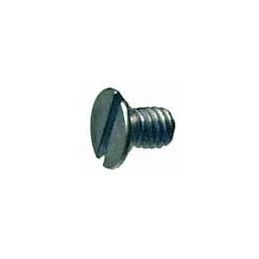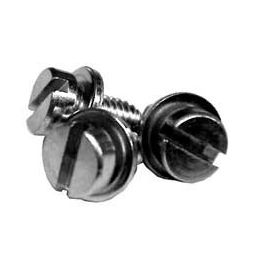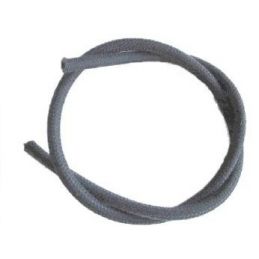Off-road Engine Build
- Written by Steve Phillips for HotVWs Magazine
In this article, I’m going to talk about building an off-road engine, mainly for sand rails. This is my preferred combination and there are many different combos out there, but this is what works for me:
First, we will talk about sizing. If you’re going to play in the sand, you will need a stroker crank. Why? Well, being in the sand is like pulling a hill even when you’re on flat ground. We need the stroke for torque. I have explained this in an old article (To Stroke or Not to Stroke). Then begs the question, what size stroke? Most stroker cranks cost about the same, regardless of stroke. My general rule is that you can run a stock length rod, up to 78mm. On an 82 to 86mm stroke, I use a 5.5” length rod. If you’re buying rods, why not just go with the longer rod? Keep in mind, longer rods will affect how wide the motor gets and that could mean more money. Like, custom-made barrels or custom-made barrel shims, longer push rods, etc. The most common size I use is 82mm.
Before you start your build, you will want to look at the engine block. I only use a good, dual relief case. I have written an article on this; as well (Case Logic). For machine work, you will need to: full flow, open bores for 92 or 94mm bore. Clearance the case for the larger stroke, shuffle pin center main studs, and cut lifter bores down for the cam you’re going to run. I install 10mm case savers and cut the front for sand seal. One last thing on the case: I buy a windage tray, as we will not be running a deep sump. I also get a sump pick up called a Super Sucker. Stop laughing, that’s really what it’s called. This puts the pick up of the oil closer to the bottom of the case, better increasing your chances of not picking up air when you’re bouncing and/or flying along. If you are using a new case, replace the oil pick up with a good, used one as the new cases come with a less than ideal oil pick up. Deep sumps are great but in an off-road car, it will likely get ripped off by something. I also run stock relief springs. Why? Because I don’t want super high oil pressure. I like it to stay around 60 at RPM and 20 at an idle. With all of that done, you should be ready to start building!
To begin the build, choose your preferred crank based on your budget due to rods and lengths. I always use a forged crank. I have had no luck with cast cranks, and I stopped using them in the early 80’s. For the rods, I like to use “H” beam rods; however, a good “I” rod will also work. Just remember what I said about length and note that the rod angle is important to the life of the motor. When considering cams, I ask my customers how much maintenance they want to do. You’re probably wondering what that has to do with picking a cam. Here is my speech to customers: I will use an Engle 120 cam with 9 to 1 compression ratio, premium gas, 3/8th aluminum push rods and good, single heavy-duty springs. A 120 cam is good until about 6,000 RPMs. A good set of springs will handle that. I don’t run dual springs on this combo as I want to run aluminum push rods. Why aluminum? Because I want to set my valve lash at .006. That means I don’t have to adjust the valves as frequently. Okay, where does the maintenance come in? If the customer is willing to do more maintenance, I run the following combo: Engle 125 cam with 9.5 to 1 compression (this is as high as I like to go running premium gas), chrome moly push rods, and dual springs. With chrome moly push rods, I set my valve lash at .003. I do this because a chrome moly push rod does not expand as much as an aluminum push rod does. When the motor cools off, you might get a valve that has no lash or, possibly, negative lash which means the valve is not closing. In other words, when you are setting the lash that tight, it’s easier to get a “too- tight” valve. With that in mind, you need to set the valves every time you take the car out, if you’re going to run that combo. Believe me, it gets old, fast. Cam gear is your discretion. If you have extra money laying around and you like the sound of straight cuts, go for it! Bang for your buck? Not really gaining much. I use the Engle Black lifters (again, this is just my preference). There are a good variety of cam people out there and lots of lifters. If you’re going to use someone else’s cam, be sure the lift and duration is close to the cam’s specifications that I listed, or you will need to do your research. I use a lightened, 8-dowel flywheel as we want quick RPM’s and I set my endplay between .005 and .007mm; not any tighter and no looser. The clutch disc that I use is a Kush-Lok and I prefer the Stage 1 Kennedy pressure plate.
For pistons, I run 90.5mm most of the time. 94mm’s are okay, too, but you will need to keep an eye on the head torque. When you bore cylinder heads to 94mm it cuts into the head stud holes, and I’m not big on that unless referring to a drag car motor that gets torn apart frequently. Another way I have gone is by using the thick wall 92’s. This barrel has the same outside diameter as the 94 but has a 92 piston. Not a bad way to go if you’re using a case and heads that are already cut for 94’s. There isn’t anything wrong with straight 92’s, but I have found that the walls are too thin for my liking. On the rings, I am not a fan of chrome so I change to either a cast ring or if the customer can afford it, total seal rings. When it comes to heads studs, I like to use 10mm. I have found that the 8mm studs like to come loose as the torque just isn’t enough to keep them tight. I know a lot of people are fans of the 8’s, I am not. I will use the Stainless-Steel stock style push rod tubes, when I can, depending on the width of the engine. I have found that they seal the best. I also purchase push rod tube protectors because they are worth it. The alternative is bending a tube and the push rod starting to hit the dent. For the push rods themselves, you can purchase or make an adjustable push rod and pay close attention to your geometry. I go into detail regarding this in a previous article (Rocker Arm Geometry). For lasting heads, I will run a good head with 40mm intakes and 35.5mm exhaust with a mild port and polish. Bigger heads make more power, yes. However, the seats tend to sink, and you no longer have a valve closing as it doesn’t sit flat on the seat so keep that in mind when considering. There are many heads out there that I have used. For example: Empi, CB performance, Steve Timms, etc. Just don’t skimp here! Most of your power comes out of the heads and stock heads do not work in this case. You will choke the motor and it will not perform to its potential. I know they can be costly, but heads are where everything happens. With the cams that I mentioned earlier, there is no reason for ratio rockers. I beef up the stock ones and use swivel feet and solid shaft rockers.
I use 44 IDF’s or the HPMX’s carbs. You can start your jetting with the following: 175 air jet, F11 tube, 130-135 main, and 55 idle. Now here is the important part: DO NOT assume the float levels are correct out of the box. They are not. Most the time they are not even close so take them apart and check them! This is crucial as the carbs are very float sensitive. They should be 10.5mm closed and 30mm open. This is measured from the gasket to the top of the float. Keep in mind with these carbs that the needles are spring loaded so do not compress the spring when checking and adjusting the closed position. When dealing with the closed position, I hold the top sideways to avoid compressing the spring. Don’t forget to use good air cleaners with an aluminum top and base. The tin ones tend to leak air, sand, and dirt under the base. It is also wise to use some type of outerwear over the air cleaners, additionally. I run the cylinder covers, doghouse fan shroud without heater ports, cool tins (between cylinders and push rod tubes) and that’s about it. I make sure to use foam over the stock doghouse cooler to be sure the air goes through the cooler and NOT around it and I run the wide fan that is made specifically for doghouse coolers. On the aftermarket fan shrouds, the fit isn’t great so look into what I call a “hoover bit”. You will find it on our website (wolfgangint.com). I like and will only run a good 4 into 1 header. Dual headers are not efficient, in my opinion. If you read my previous article (Don’t Get Exhausted), you will see why.
There are lots of different ignition set ups out there and I have run many of them. Most are good; however, it’s hard to beat a 009 distributor with a Bosch blue coil. I always run an electronic ignition in my 009 as sand and points do not play well together. I set my timing at 28 degrees, full advance. I use a large pulley (stock size) if my customer does more putting around then racing. I will use a power pulley if my customer is one that likes the gas pedal. You can use the stock mechanical fuel pump, which is what I prefer. The reason I prefer this over an electric pump is because if you roll the car over, the electric pump won’t stop pumping. With the mechanical pump, the pump stops when the motor stops. I run an alternator as opposed to a generator. In this specific setup, most of you will have lots of lights and will need the power that the alternator produces. If you’re not running lots of electrical, then use a generator. They are more reliable than an alternator. Make sure on the pulley you have a minimum of 8 shims. What you don’t use between the pulleys should be on the outside of the outer pulley. Also, make sure you have an idiot light on your dash. This is going to tell you if the alternator/generator is turning. Often with rapid RPMs on a stock size pulley, you can throw the belt. The idiot light makes it nice for knowing if the fan is turning. If you find yourself throwing belts, look at your pulley alignment and if the alignment is good, you should look into the power pulley. I run different sized external coolers depending on placement. You can get away with a 48 plate Mesa cooler if you mount it high enough into air flow. What ever you do, never mount and external cooler in front of the engine fan. Think about it… We are trying to get the heat away from the motor, NOT suck it back into the motor. I also run a Systems 1 oil spin-on filter. Yes, they’re expensive. However, they are cleanable and won’t pop under high pressure. I suggest you run a breather box with these compression ratios. I prefer the K&N style. It is large and one port on the bottom drains back any oil that makes its way up the hose.
To complete the build, you’ll want to install proper gauges. I run a tach, oil pressure, idiot light, and oil temperature. I have built ample motors with these specifications and I am not saying that it is the only way, but I have received very positive customer feedback and it works well for us. If you are serious about beginning your build, I suggest you read some of my previous articles to help with guidance.







